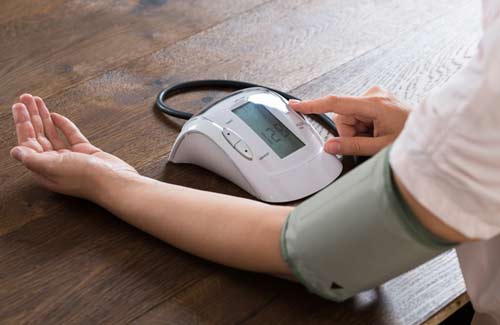High blood pressure is the number one cause of death and disability in the world. More than half of Americans over 50 have it.1 2
That’s why many of us have been told by our doctors to keep an eye on our readings. So we may use a home monitor to track our readings. These devices have become popular in recent years. They are inexpensive (many are under $30) and widely available at drug and department stores.
Now, a new study shows these monitors may do more harm than good. Researchers found 70% of them provide inaccurate readings.3
This means millions of patients are potentially taking drugs for hypertension they don’t have… Or they have high blood pressure and don’t know it.
Scientists at the University of Alberta in Canada tested 85 adults who used home blood pressure monitors.
Subjects first took their blood pressure using their own monitor. Immediately afterwards, two experienced medical professionals took their blood pressure readings using a mercury sphygmomanometer. These devices are considered the gold standard for blood pressure measurement. They are the most accurate and are what many doctors use.4
Researchers found that 70% of the home monitors were consistently off by more than 5mmHg. And 30% of them had readings that were off by 10 points or more.
Doctors often use a patient’s home readings to help make blood pressure treatment decisions. A 5- to 10-point inaccuracy could cause a doctor to needlessly prescribe hypertension medication. Or it could cause them to fail to treat a patient with high blood pressure.
The study found that readings were more inaccurate in men than women. This could be due to arm size or cuff design. The researchers said they weren’t sure of the reason.
The study was published in the American Journal of Hypertension.
Why are home monitors so inaccurate?
The exact reason is impossible to know. That’s because manufacturers keep the software and electronic designs secret. They say they are proprietary.
How to Get an Accurate Blood Pressure Reading at Home
It’s not practical to get a professional mercury sphygmomanometer for home use. They are large, expensive, and take training to use properly. But there are other steps you can take to get valid blood pressure readings at home:
Test the accuracy of your home monitor. Take your home monitor to your next doctor’s appointment. After they take your blood pressure with their professional monitor, take a reading with your home monitor. The numbers should be within five points of each other.
Don’t use a wrist monitor. They are less accurate than models that use an arm cuff.5
Take three readings. The average of the three will be more accurate than a single reading.
Follow the 12-minute rule. A Canadian study found that patients should sit quietly for 12 minutes before a reading is taken. This lowers your heart rate and provides a more accurate reading.
One more thing… Consumer Reports tested dozens of home blood pressure monitors and found that one was more accurate than the others. It’s the Omron 10 Series. It is widely available online and at big box retailers for about $65.
Editor’s Note: Something strange was happening to pilots training to fly F-16 fighter jets. The ones who went into the program with elevated blood pressure were coming out a few weeks later with normal, healthy readings.
They hadn’t taken any medications… Their diets hadn’t changed… And they hadn’t made any changes to their exercise regimens.
Go HERE to discover their secret—and how you could lower your blood pressure up to 15 points from your living room using this same trick.
Like this Article? Forward this article here or Share on Facebook.
References:
1 https://www.ncbi.nlm.nih.gov/pmc/articles/PMC3676205/
2 https://www.cdc.gov/bloodpressure/facts.htm
3 https://medicalxpress.com/news/2017-06-home-blood-pressure-inaccurate-percent.html
4 https://en.wikipedia.org/wiki/Sphygmomanometer
5 http://www.consumerreports.org/cro/magazine/2016/02/best-home-blood-pressure-monitor/index.htm

